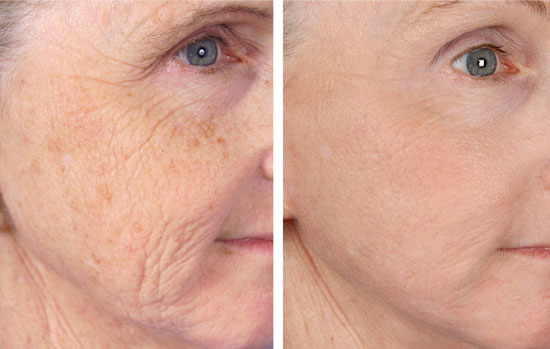Wrinkles are caused by a combination of factors, some can be controlled, others cannot. Age is one factor that cannot be controlled. As we age, skin naturally becomes less elastic and more fragile. Decreased production of natural oils dries the skin and creates superficial dehydration. Fat in the deeper layers of skin diminishes with age. This creates loose, saggy skin and pronounced lines. Repeated facial expressions, such as squinting and smiling, lead to fine lines and wrinkles too. Smoking and ultraviolet exposure are other contributing factors. Avoiding wrinkles indefinitely is impossible. However, at Laser Aesthetics of Colorado, we believe laser is the gold standard to restore the integrity of the skin for our Centennial wrinkle reduction patients.
Candidates for Wrinkle Reduction
- Patients with wrinkles around the eyes, forehead or mouth
- Patients with skin that is non-responsive after a surgical facial procedure
- Patients that can avoid sun exposure after treatment for up to three months
About Wrinkle Reduction
Wrinkle reduction is achieved by minimizing the severity of depressions or impacts in the skin to achieve a smoother, more rejuvenated looking skin. Effective laser wrinkle reduction treatment provides long-lasting results, but the same effects that caused the original wrinkles will eventually cause the wrinkles to increase in severity. Laser therapy for the reduction in facial wrinkles is approved by the FDA for use around the eyes, mouth and face. Side effects associated with laser wrinkle reduction are rare and what can occur is minor, with most patients reporting complete recovery within a few days.
How Wrinkle Reduction is Performed
Laser wrinkle treatment is achieved by sending short, focused laser light deep into the skin using a handheld device. The pulses of concentrated light affect the underlying structure of the skin and cause the production of new collagen. The new tissue is created while the old, damaged tissue is naturally removed from the skin. Most of our Centennial wrinkle reduction patients are satisfied with the results they experience after one treatment, but follow-up and maintenance treatments are available.
Results:

